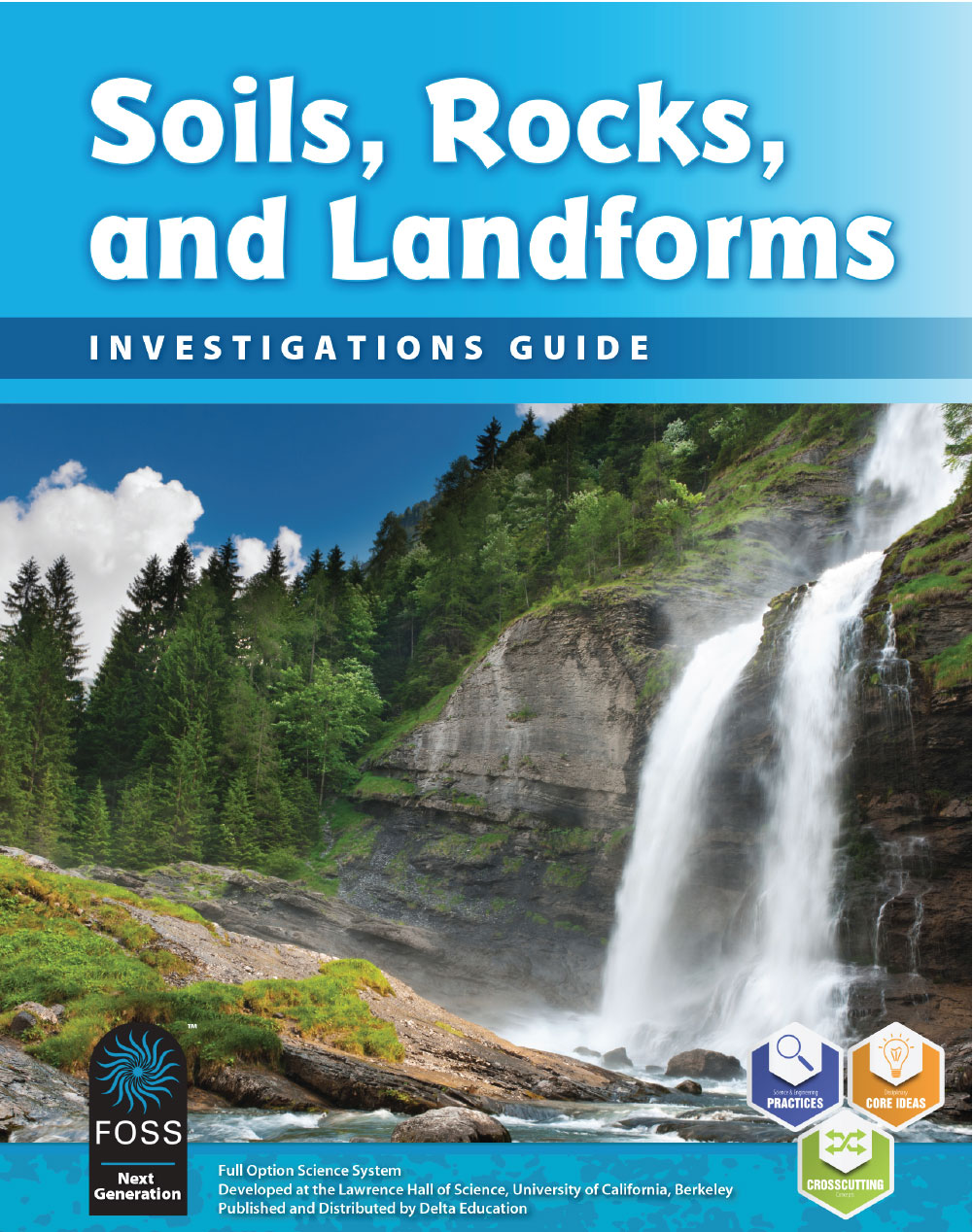FOSS Next Generation Soils, Rocks, and Landforms
Grades 4

Geology is the study of our planet’s earth materials and natural resources. The Soils, Rocks, and Landforms Module provides students with firsthand experiences with soils, rocks, and minerals, and modeling experiences to study changes to rocks and landforms at Earth’s surface.
Investigation 1: Soils and Weathering
Students investigate properties of soil by comparing four different soils. They learn that soils are composed of essentially the same types of materials (inorganic earth materials and humus), but the amounts of the materials vary. They begin to explore how rocks break into smaller pieces through physical and chemical weathering, then go outdoors to explore and compare properties of local soils.
Investigation 2: Landforms
Students use stream-table models to observe that water moves earth materials from one location to another. They investigate the variables of slope and water quantity and plan and conduct their own stream-table investigations. Students look for evidence of erosion and deposition outdoors. They learn about the different processes that can result in fossils and how fossils provide evidence of life and landscapes from the ancient past.
Investigation 3: Mapping Earth’s Surface
Students are introduced to the study of topography by building a model of a mountain. They create a topographic map, and use this map to produce another representation of the landforms—a profile of the mountain. Students learn about volcanoes; they use the topographer’s tools to analyze the impact of the Mount St. Helens’ eruption. Students are introduced to landslides, earthquakes, floods, and volcanoes. They are introduced to processes that cause rapid changes to Earth’s surface: landslides, earthquakes, floods, and volcanoes.
Investigation 4: Natural Resources
Students review what they have learned in Investigations 1–3. Then they focus on earth materials as renewable and nonrenewable natural resources. They learn the importance of earth materials as resources. The class makes a stepping stone out of concrete and goes on a schoolyard walk to find objects and structures and considers what natural resources were used to construct them.